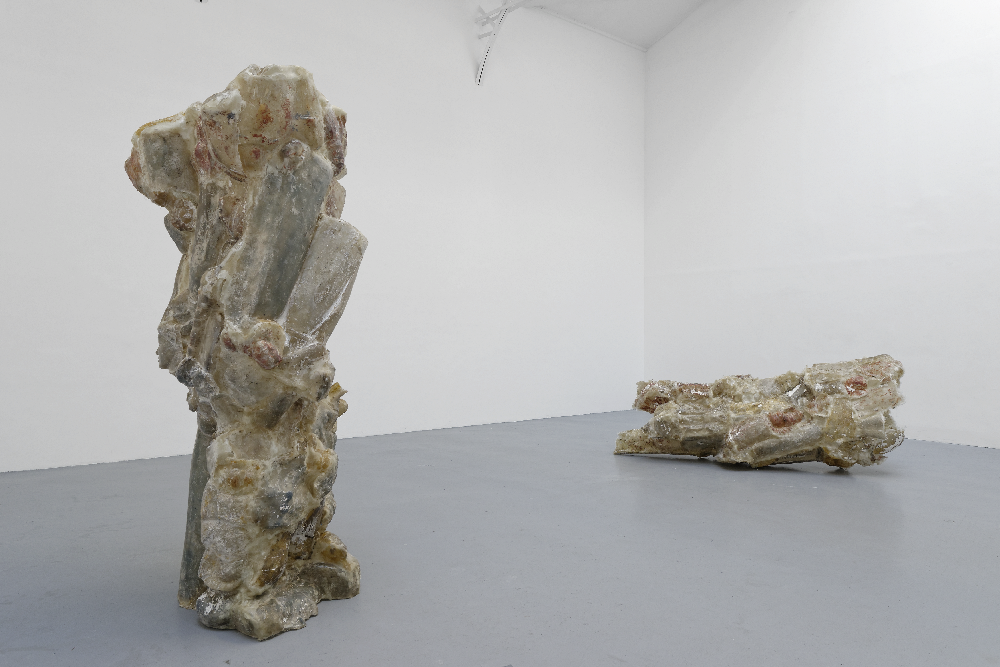Ciprian Mureșan
The Plague Column
Ciprian Mureșan’s commission for the Art Encounters Biennial 2019 draws attention to some fundamental questions regarding the process of art making. One has to do with originality, explored in numerous projects by the artist where the process of copying evolved into a consistent artistic method. Through meticulous hand-drawing replicas of material from canonical art history, Mureșan highlights how the act of reproduction mediates our relationship with culture, and is inherent to the act of creation.
Interested in the typology of the plague column, very common in the Baroque era, the artist drew attention to Timișoara’s Monument of the Holy Trinity. Known as The Plague Column, the statue was commissioned by the counselor of the local administration, Johann Anton Deschan Hansen, built in Vienna, and installed in Timișoara in 1740 in Saint George’s square before being moved in the 1970s to its current location in the middle of Union square. Two years earlier, Timișoara was devastated by plague and such a monument aimed at commemorating the violent pandemic, while also reinforcing faith in the Catholic church in response to the Protestant reformation. The model for this type of monument was The Plague Column in Vienna which was replicated in local variations of the baroque. Mureșan’s replica is a radical transformation of the original column. Made out of resin with fiberglass, with an opaque, grey surface that resembles cement, the column lies down on grass as a relic from an uncertain time and place. Whereas, conventionally, such monuments marked city’s power center, Mureșan’s work is decentralized at the outskirts of Timișoara, in Soarelui neighborhood, one of the last working class districts built in the ‘80s. A figure emerges and is reproduced on the column, revealed to be a plaster mould that the artist made after Oscar Han’s monumental portrait of Mihai Eminescu, an influential Romantic poet from Romania. The multiple repetitions of Eminescu’s imposing portrait echoes the mechanisms in myth-making. Folded and attached to the column are several dense pencil drawings by the artist. Using the support of a light box, the artist reproduced to-scale illustrations from four books documenting the public monuments in Timișoara. Exposed to the outdoor conditions, both the drawings and the column will deteriorate over time. They are not meant to last, and why should they? is ultimately the question the artist is raising. AR
Ciprian Mureșan (b. 1977, Dej) lives in Cluj-Napoca. Since 2005, he has been an editor of the IDEA art + society magazine. In 2009, he represented Romania at the 53rd International Art Exhibition of the Venice Biennale. Selected exhibitions: L’atelier sans fin, Galerie de l’Atelier Brâncuși, Centre Pompidou, Paris (2019, solo, with Șerban Savu); #1.3 WAYS TO TIE YOUR SHOES: CIPRIAN MUREȘAN, Convent Art Space, Ghent (2017, solo); Viva Arte Viva, 57th Venice Biennale (2017); Your survival is guaranteed by treaty, Ludwig Museum, Budapest (2015, solo); Allegory of the Cave Painting, Extracity Kunsthalle, Museum Middelheim, Antwerp (2014); Contemporary Art Gallery, Vancouver (2013, solo); Six Lines of Flight: Shifting Geographies in Contemporary Art, Museum of Modern Art (MOMA), San Francisco (2012); Stage and Twist, Project space, Tate Modern, London (2012, solo, with Anna Molska); Contemporary Art Center, Geneva (2012, solo); Recycled Playground, FRAC Champagne-Ardenne, Reims (2011, solo); Les Promesses du passé. Une histoire discontinue de l’art dans l’ex-Europe de l’Est, Centre Pompidou, Paris (2010); The Generational: Younger than Jesus, New Museum, New York (2009).

Ciprian Mureșan, Plague Column, 2016, exhibition view, Eric Hussenot Gallery, Paris, courtesy of the artist, photo credit: Eric Hussenot Gallery
Dan Acostioaiei
Halil Altındere
Forensic Architecture
Anca Benera & Arnold Estefan
Michael Beutler
Pauline Boudry & Renate Lorenz
Irina Botea Bucan & Jon Dean
Filipa César & Louis Henderson
Kray Chen
Collection Collective
Céline Condorelli
Alexandra Croitoru
Decolonizing Architecture Art Residency
Chto Delat
Aslan Gaisumov
Dora García
Ane Graff
Alma Heikkilä
Ane Hjort Guttu
Gülsün Karamustafa
Behzad Khosravi Noori
Gunilla Klingberg
Vilmos Koter
Zac Langdon-Pole
Matts Leiderstam
Anne Low
Virginia Lupu
Taus Makhacheva
Liliana Mercioiu Popa
Metahaven
Ana Maria Millán
Malgorzata Mirga-Tas
Naeem Mohaiemen
Monotremu
Tanja Muravskaja
Ciprian Mureșan
Joar Nango
Thao Nguyen Phan
Ho Tzu Nyen
Pınar Öğrenci
Ahmet Ögüt
The Otolith Group
Trevor Paglen
Philippe Parreno
Gary-Ross Pastrana
Peles Empire
Lia Perjovschi
Agnieszka Polska
Ghenadie Popescu
Walid Raad
Vandy Rattana
Bella Rune
STEALTH.unlimited
Zhou Tao
Iulia Toma
Tur de Arhitectură
Mona Vătămanu & Florin Tudor
Anton Vidokle
Haegue Yang
Mădălina Zaharia
Zephyr
Želimir Žilnik
